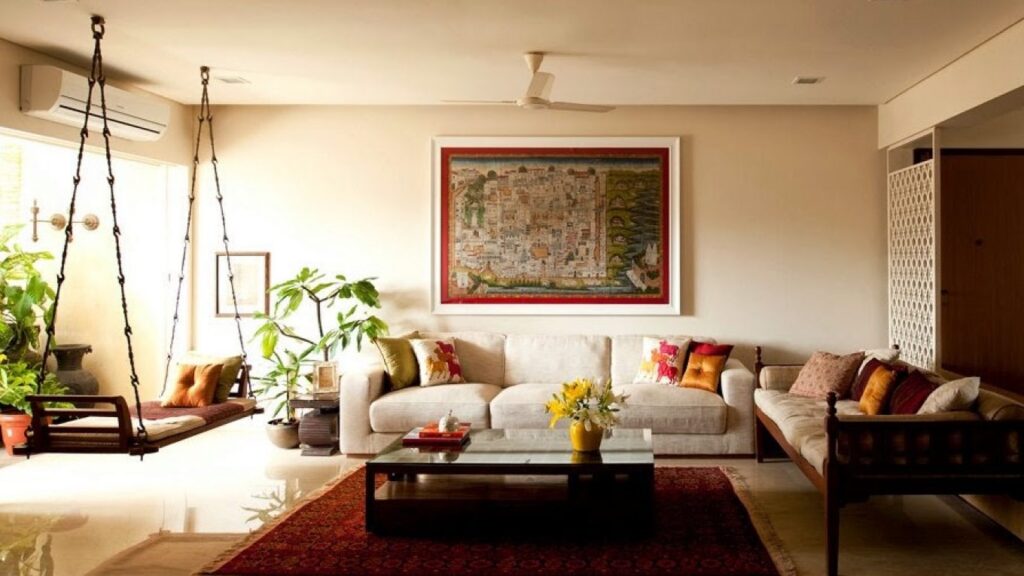Probably, you have decided to believe in Vastu Shastra and are now surfing through trustworthy sources and wandering places to know more about it. Rightly so, because we are seeing a diminishing culture of consulting a priest (Purohit) for every little thing and every bigger concern.
What is “Vastu Shastra”?

source: housing.com
I am sure, you want to make your newly established beliefs concerning Vastu Shastra stronger. Let me tell you the meaning of the term “Vastu Shastra” before we go ahead in discussing it in detail.
Let us decode the terms and learn them in splits. Only when you are aware of the meaning, you can appreciate the benefits.
The word “Vastu” means “to live” and “Shastra” means “text of instruction”. Clubbed together, “Vastu Shastra” becomes “science of architecture”.
It is an ancient Hindu system of architecture that suggests certain guidelines that must be followed to stay under the influence of the right kind of energy.
Also, I want you to take a deep breath before rushing into those undeniably fruitful Vastu Shastra tips.
The list of 10 House Vastu tips:

source: architecturaldigest.in
You can make your house Vastu compliant following a few simple guidelines at the time of planning. Even for an already built house where architectural changes are not possible, you can adopt certain guidelines that do not ask for architectural changes.
Let me walk you through in the right direction, alongside educating you about the wrong ones.
1. Panchang must be followed
Panchang is the Hindu calender that is compliant with Vastu Shastra. It is recommended that a Panchang must be referred to for every event to be conducted in the process of making a venture into a new house.
2. The direction of the entrance
This aspect of Vastu Shastra must be carefully dealt with to ensure that when you leave, you face either north, east, or north-east direction.
Additionally, it must be a wooden door, slightly taller than the other doors in the house, must not be painted black and must open clockwise. Other don’t include bathroom near the main door, the placing of shoe racks, and dustbins.
3. Living room, bedroom & kitchen tips
There are written rules for living rooms, bedrooms, and kitchens concerning direction, colour, and placement of entities to invite and establish positive energies, peace, and harmony among family members and develop good relations with the visitors.

source: lifeberrys.com
Living room: Living room rules are pretty straightforward. The direction requirements coincide with those of the entrance, i.e, east, north, or northeast. This section of the house receives most traffic from social gatherings and family occasions. Hence, the arrangement in this room must be pretty simple, clutter-free and appliances must face southeast direction. Mirror, if any, must be installed on the north wall.
Bedroom: The direction of the bedroom must be decided carefully. You should avoid the northeast direction, while the southwest direction could be the most appropriate decision to build prosperity in relations.
Kitchen: Right direction for a kitchen room is the southeast. The same goes for appliances in the kitchen room. Besides, special attention must be given to avoid north, northeast, and southwest direction.
4. Placement of furniture
Ideally, the furniture must be placed facing the west or southwest direction to ensure compliance to Vastu Shastra. Besides, a traditional Indian hand-made carpet beneath those furniture will only contribute to the aesthetics and comfort of your home.
5. Colour use
Vastu Shastra strictly composes its list of colours keeping the dark colours out of it. Bright colours are preferred to bring a sense of positivity and energy. Some of the prominent shades include yellow, white, orange, blue and green.
6. Shape of rooms

source: indiatvnews.com
Vastu Shastra lay specific rules concerning the geometry of constructs and entities that we decide to have in place. It is strictly recommended to have rooms that are shaped either squares or rectangles. Rooms in any other geometry must be avoided. Special attention must be given to do away with furnitures in circular shapes.
7. Daylight and ventilation
Who can deny having a spacious house with ventilation that lets daylight and air come in? While this aspect of Vastu Shastra is likely to happen naturally, make effort to ensure ventilation if the plan resists such inclusion. Whatsoever, ventilation is recommended to allow energy flow into the house.
8. Meditation hall
The culture of meditation and pray is diminishing day-after-day. So, if you are aspiring to a Vastu Shastra-compliant house, you will be in an advantageous position. Include in your home plan a meditation hall facing east or northeast. Follow the colour rules specified above.
Meditation and yoga in such a setting will help you introspect yourself and remain in good health for a longer period. Having a yoga mat or carpet will complement your activity inside the meditation hall besides improving the aesthetics.
9. Tips to follow at the time of moving-in

source: lifeberrys.com
Graha Pravesh is the time when we decide to move into our newly made house. This is the beginning of the making of a home from a bare house. It is when you decorate the ins and outs of the house with blessings from ceremonial prayers.
Also, as per Vastu Shastra, before moving in you must break a coconut and then step in with your right foot forward.
10. Performing rituals
Upon your venture into a new house following Graha Pravesh rules, the next thing you would be expected to do is perform rituals, paying offerings to the god. The offering would generally comprise fruits, flowers, turmeric, ghee, coconut, havan, among other worship materials.
No matter what brought you here, adoption of these house Vastu tips is only going to benefit and bring in positive energy to your home.


